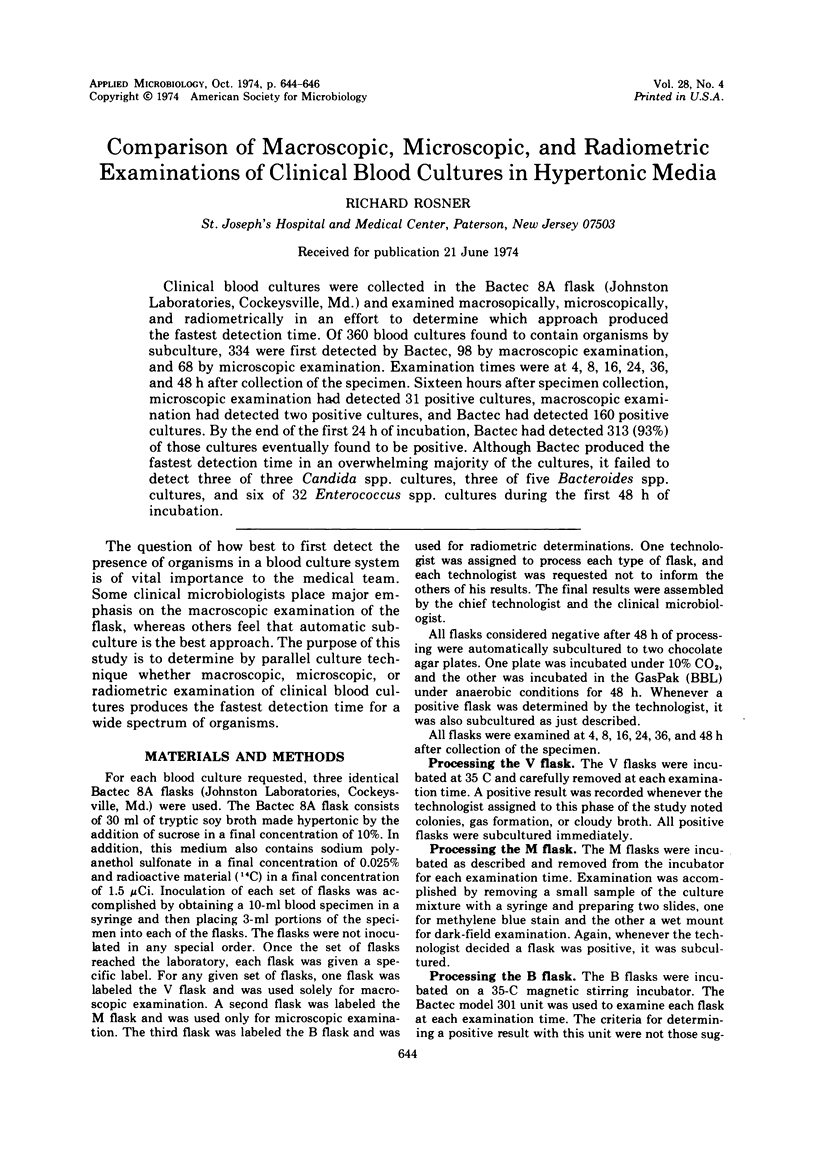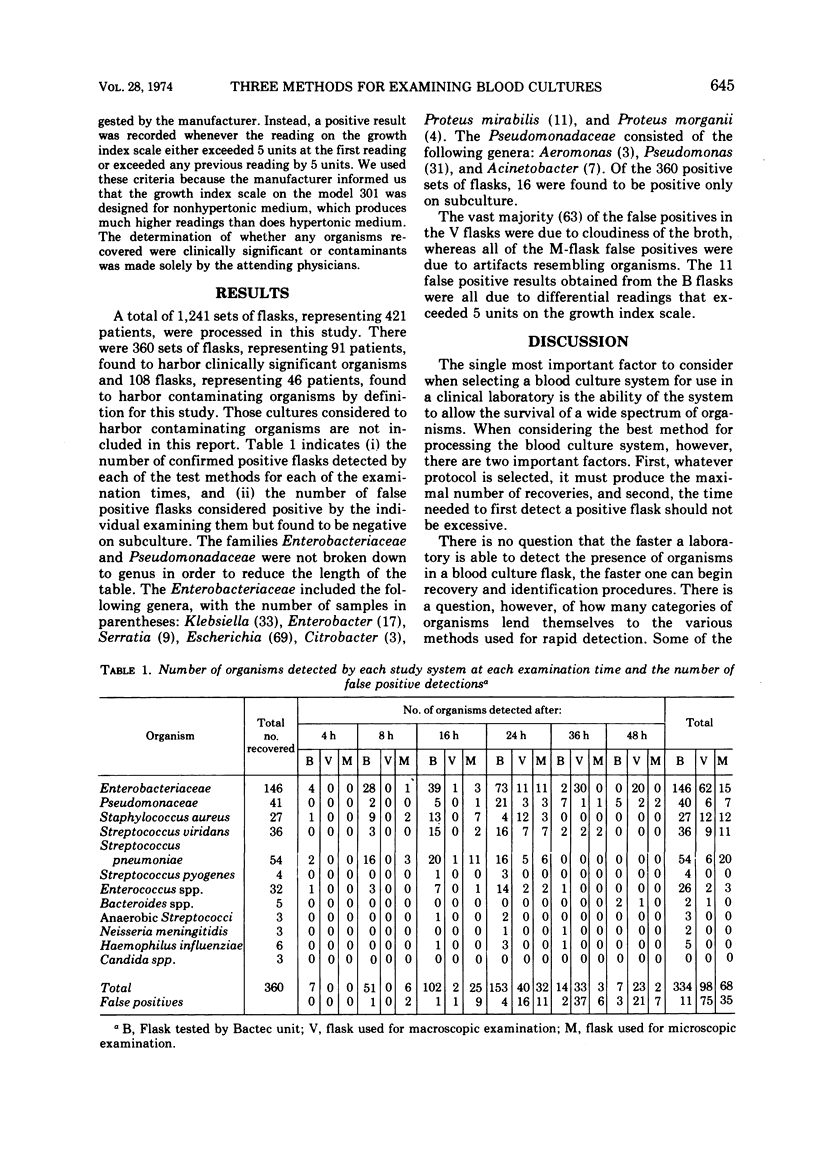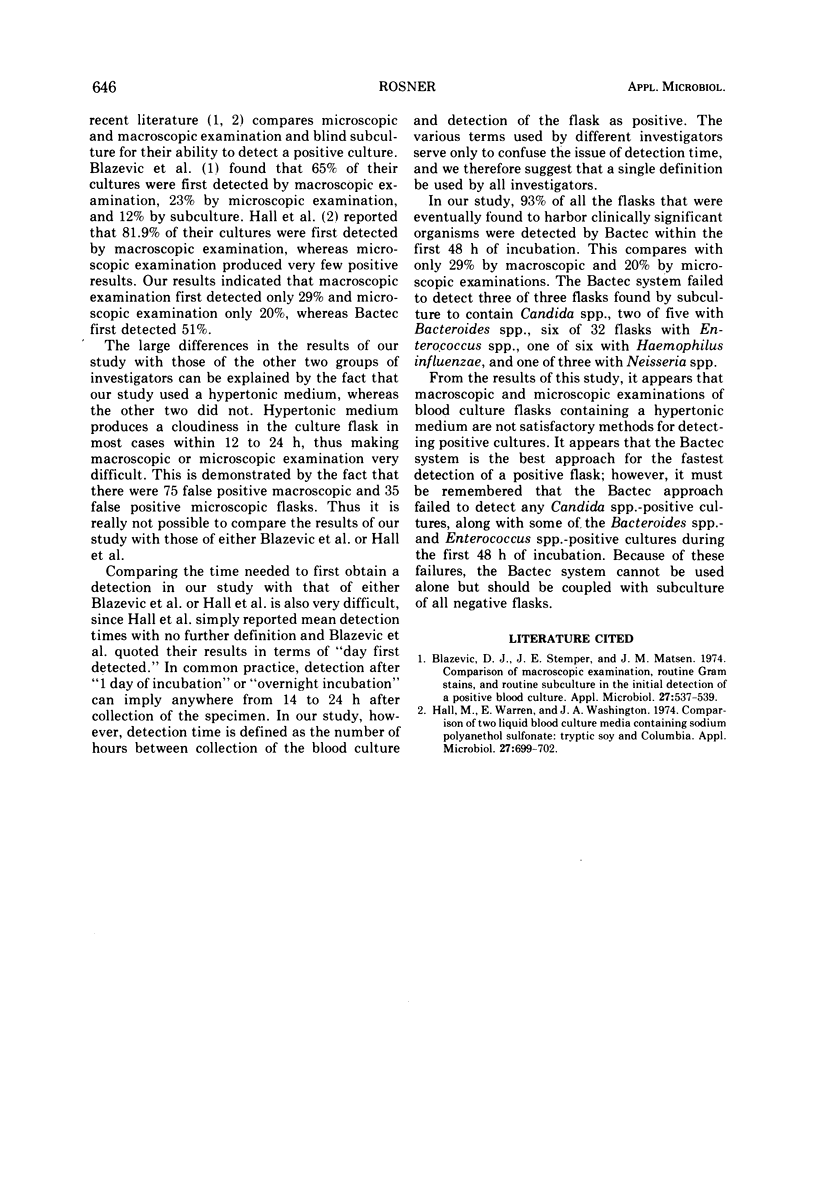Abstract
Clinical blood cultures were collected in the Bactec 8A flask (Johnston Laboratories, Cockeysville, Md.) and examined macrosopically, microscopically, and radiometrically in an effort to determine which approach produced the fastest detection time. Of 360 blood cultures found to contain organisms by subculture, 334 were first detected by Bactec, 98 by macroscopic examination, and 68 by microscopic examination. Examination times were at 4, 8, 16, 24, 36, and 48 h after collection of the specimen. Sixteen hours after specimen collection, microscopic examination had detected 31 positive cultures, macroscopic examination had detected two positive cultures, and Bactec had detected 160 positive cultures. By the end of the first 24 h of incubation, Bactec had detected 313 (93%) of those cultures eventually found to be positive. Although Bactec produced the fastest detection time in an overwhelming majority of the cultures, it failed to detect three of three Candida spp. cultures, three of five Bacteroides spp. cultures, and six of 32 Enterococcus spp. cultures during the first 48 h of incubation.
Full text
PDF


Selected References
These references are in PubMed. This may not be the complete list of references from this article.
- Blazevic D. J., Stemper J. E., Matsen J. M. Comparison of macroscopic examination, routine gram stains, and routine subcultures in the initial detection of positive blood cultures. Appl Microbiol. 1974 Mar;27(3):537–539. doi: 10.1128/am.27.3.537-539.1974. [DOI] [PMC free article] [PubMed] [Google Scholar]
- Hall M., Warren E., Washington J. A., 2nd Comparison of two liquid blood culture media containing sodium polyanethole sulfonate: tryptic soy and Columbia. Appl Microbiol. 1974 Apr;27(4):699–702. doi: 10.1128/am.27.4.699-702.1974. [DOI] [PMC free article] [PubMed] [Google Scholar]


